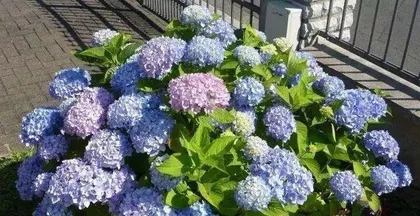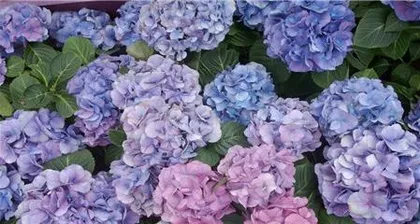Hydrangea is a popular ornamental foliage plant that often appears in home decor. However, some people may not know that hydrangea is a poisonous plant. This article will detail the toxicity of hydrangea and the precautions to take when caring for it at home.

Understanding the Toxicity of Hydrangea
Hydrangea contains triterpenoid saponins, which is a substance with strong toxicity.
Contact with hydrangea may cause allergies
Contact with hydrangea leaves and stems may cause skin itching, allergies, and other reactions.

Oral consumption of hydrangea can cause poisoning
Ingesting hydrangea roots, stems, or leaves may cause symptoms such as nausea, vomiting, headaches, and even coma.
Care for hydrangeas at home with caution
Because hydrangea is poisonous, it needs to be handled with care when kept at home. It is recommended to place it in a location where children cannot reach it.
Washing hands is key to preventing allergies
If you come into contact with hydrangea leaves or stems, wash your hands with water immediately to prevent allergic reactions.

Ventilation should be noted when growing hydrangeas at home
Due to the toxic substances in hydrangea, it is recommended to pay attention to ventilation when caring for it at home to reduce its impact on the human body.
Avoid accidental ingestion, especially by children
Because ingesting hydrangea can cause poisoning, especially for children. When growing hydrangeas at home, accidental ingestion should be avoided as much as possible.
Do not use hydrangea as medicinal material
Although hydrangea has certain applications in traditional Chinese medicine, ordinary people should not use it as a medicinal herb to avoid poisoning.
Pay attention to watering when caring for hydrangeas
When caring for hydrangeas, pay attention to watering them in moderation, avoiding overwatering or underwatering.
Pay attention to fertilizing during the care process
During the process of caring for hydrangeas, you can fertilize them in moderation, but not excessively, to avoid harming the plant.
Controlling temperature is also necessary for hydrangea care
When caring for hydrangeas, pay attention to controlling the ambient temperature to avoid the effects of excessively high or low temperatures on the plant.
Preventing and treating pests and diseases on hydrangeas
When caring for hydrangeas, pay attention to preventing and treating pests and diseases to ensure the healthy growth of the plant.
Regular pruning is needed for hydrangea care
When caring for hydrangeas, you can prune them regularly to maintain their beautiful shape.
Identify hydrangeas from other similar plants
Hydrangeas are similar to other plants, such as lilies and boxwood. It is necessary to distinguish them clearly when purchasing and caring for them.
Conclusion
When growing hydrangeas at home, it is necessary to pay attention to their toxicity, avoid accidental ingestion and contact, and also pay attention to moderate watering and fertilizing, controlling the ambient temperature, preventing and treating pests and diseases, and regular pruning and identification. Only in this way can you enjoy the pleasure brought by this beautiful ornamental foliage plant with peace of mind.